Many primary cancers can metastasize to other organs, and 'bones' are fairly easy to metastasize. Once the bone metastasis occurs, it will bring not only pain but also three concerns:
First: Pathologic fracture
Second: Spinal cord compression
Third: Hypercalcemia
These three troublesome issues are called ‘skeletal-related events.’ Let's talk about pathological fractures here.
As the name implies, the pathological fracture is a fracture, but it is different from the general fracture in the cause, condition, and treatment. Let's take a look at the chart below.
The difference between pathological fractures and traumatic fractures
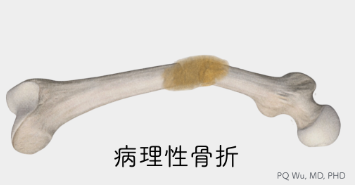
Pain and loss of function
can cause severe pain
Caused by tumors or myelitis
Since the tumor eroded the bones, it often causes minor twists and fractures
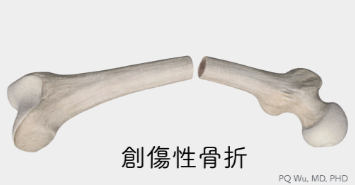
Pain and loss of function
can cause severe pain
Caused by trauma
Caused by falls, car accidents, etc
Surgery is required to remove tumors and fix fractures
Surgery usually removes the tumor at the same time
Bone defects are relatively large
Since the tumor eroded the bones, it often causes bone defects
Surgery merely fix the fracture
The surgery only reset and fix the fracture
Bone defects are relatively small
Unless there is a severe crushing fracture, there are generally not many bone defects
The risk of surgery is high
The risk is higher because of the high amount of bleeding and a long time of tumor removal coupled with the general poor physical condition of the patient
Fractures are not easy to recover
Because there is a tumor in the local area, fractures heal slowly or even do not heal
The risk of surgery is low
Surgery only resets the fracture and fix it, bringing lower overall risk
Fractures can recover easily
Unless severely crushed or open fractures occurred, bones would heal in an average of three to five months
From the table above, we can understand that pathological fractures are different from general fractures in the cause. General fractures are caused by severe trauma, such as car accidents, falls, etc. Pathological fractures are caused by tumors or myelitis, etc., which cause damage to bone structure. Hence, fractures occur in minor injuries, such as twisting. However, any fracture can cause pain and loss of limb function. Therefore, in most cases, both require surgery to treat. In terms of surgery, pathological fractures are often more difficult than normal fractures because:
First: Surgery for pathological fracture would need to remove the tumor simultaneously; the surgery takes a long time.
Second: Tumors can damage the bone structure. Therefore, pathological fractures usually have large bone defects. Because larger bone defects exist, doctors need to reconstruct bone defects with bone cement, allograft bones, or bone substitutes during surgery.
Third: The patients with pathological fractures have poor health. Hence, the overall risk of surgery and anesthesia is higher than usual.
Fourth: Pathological fracture brings more damage to the bone structure, and post-surgical radiation therapies are mostly needed. Coupled with the fact the residual tumors can remain at the surgical region, the post-surgical recovery at the fracture sites is poor.
Because pathological fractures can cause these unpleasant problems, the most important way is to 'avoid' them.
Medically, to avoid pathological fractures, the most important thing is to use scientific methods to 'estimate' the chance of pathological fractures in patients with bone metastasis. The most common method we use is the one developed by Dr. Mirels at the University of Witwatersrand, Johannesburg, South Africa, and published in CORR in 1989.
This evaluation method has four factors, including the tumor location, the severity of the pain, the characteristics of the tumor under X-ray images, and the extent to which the tumor invades the bone. Each factor is divided into 1, 2, and 3 points according to the table below.

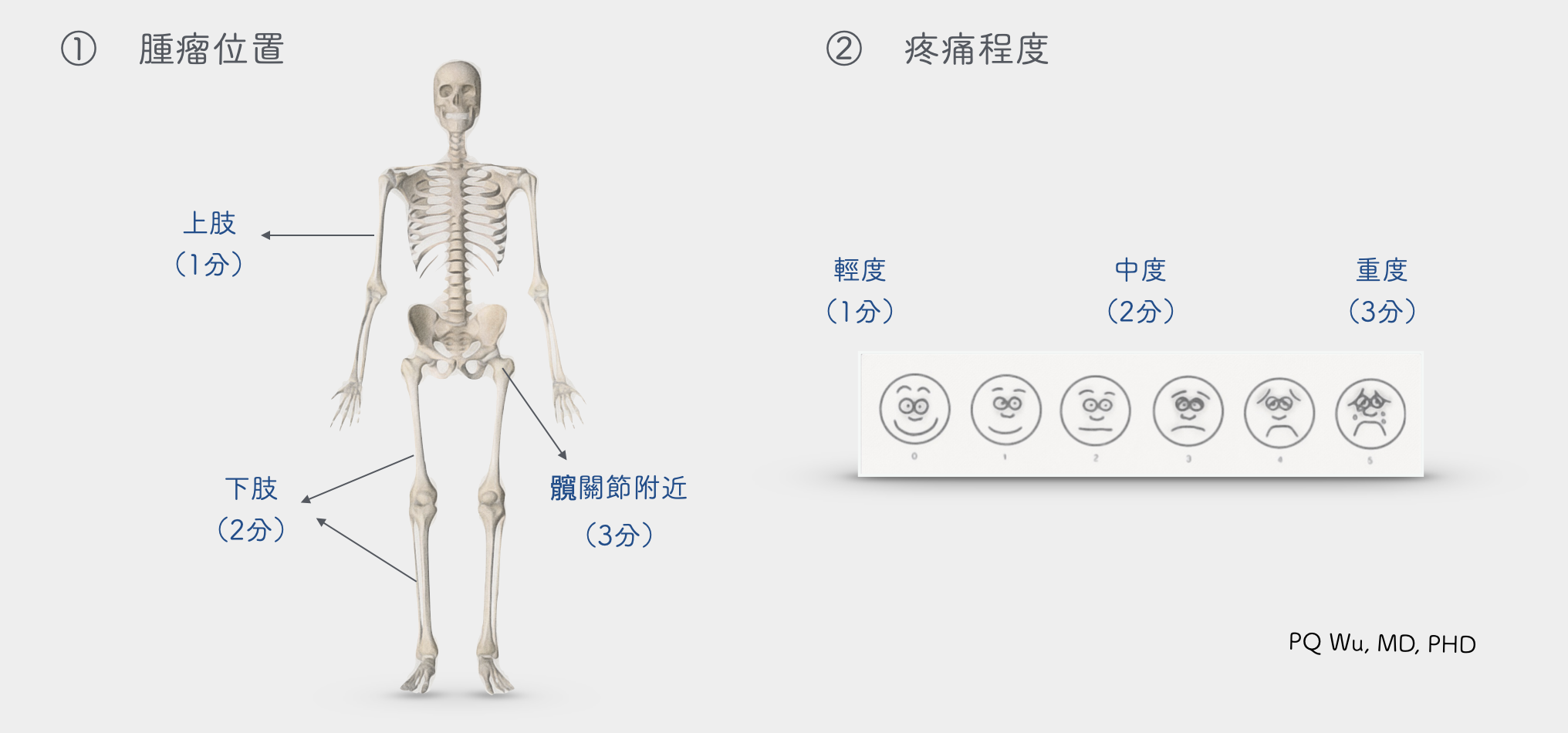
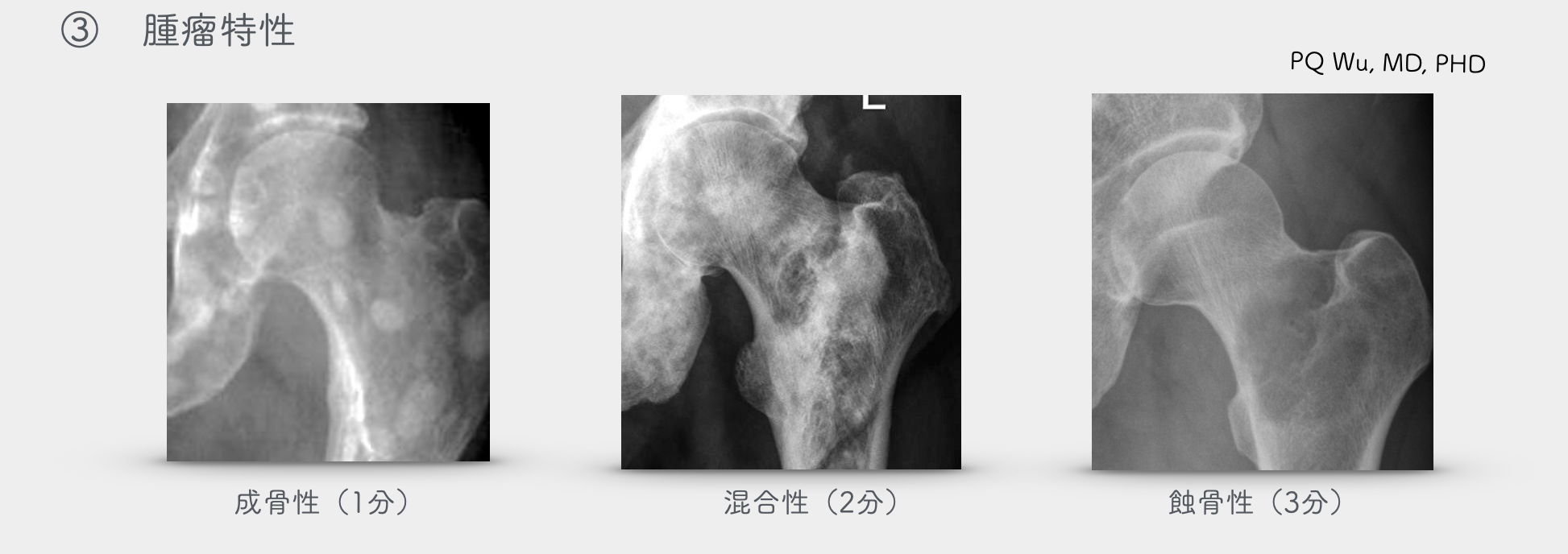
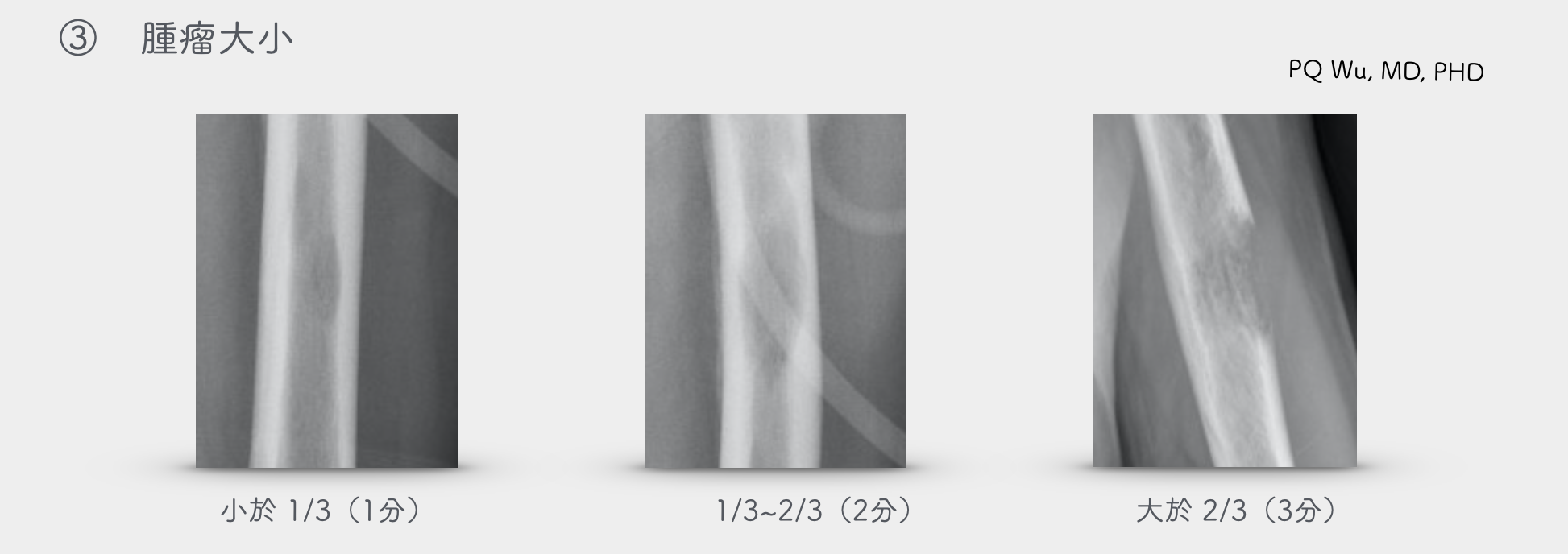
Sum each score. If we obtain:
A total score equals nine points, a 30 to 80% chance of pathological fractures will occur.
A total score greater than nine points, greater than 80% chance of pathological fractures will occur.
Generally, in clinical situations, when the total score is equal to or greater than nine points, if the patient's physical condition is capable, surgical fixation of the broken bones should be prompt to avoid pathological fractures. However, if the patient is in poor health and unable to take surgery, considerable care must be taken to avoid falls, followed by continuous outpatient follow-up. Other considerations include:
1. Avoid weight-bearing exercise.
2. Use crutches, stents, and other aids to assist with daily activities, depending on the condition.
3. More exposure to the sun (half an hour per day, even only palm exposure is fine).
4. Take more vitamin D (sea fish, eggs, milk, and liver).
Similarly, if the total score is less than nine points, regular outpatient tracking must continue, and the above items should be considered.
We have created an online table that allows clinicians to use as a reference for assessing the risk of pathological fractures. According to other research and our experience, we added if 'no X-rays are available' scenario to the assessment method. If required, the reader can try to do the assessment.
Whether patients, family members, and doctors, tripartite recognition must be bear on the possibility of bone metastasis and even pathological fractures to cancer patients. Moreover, they should understand how to avoid pathological fractures to prevent serious influence on patients’ quality of life.


